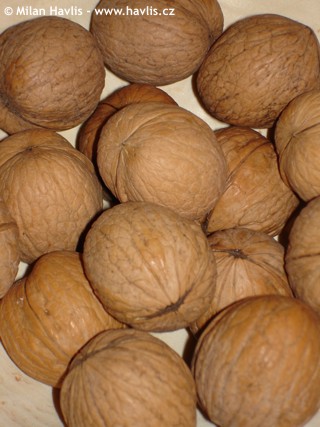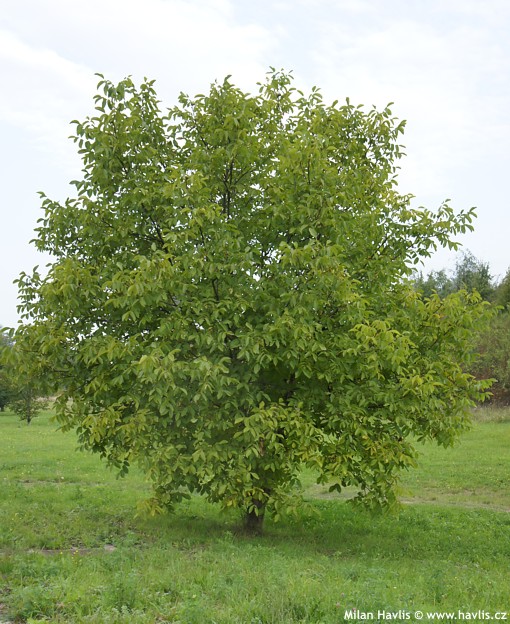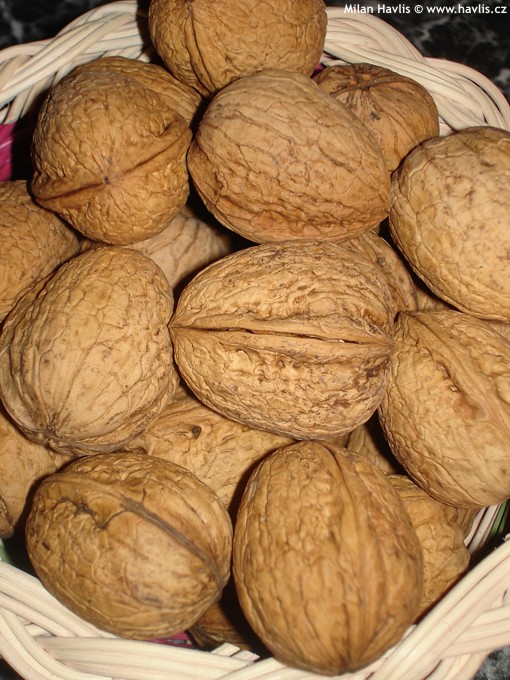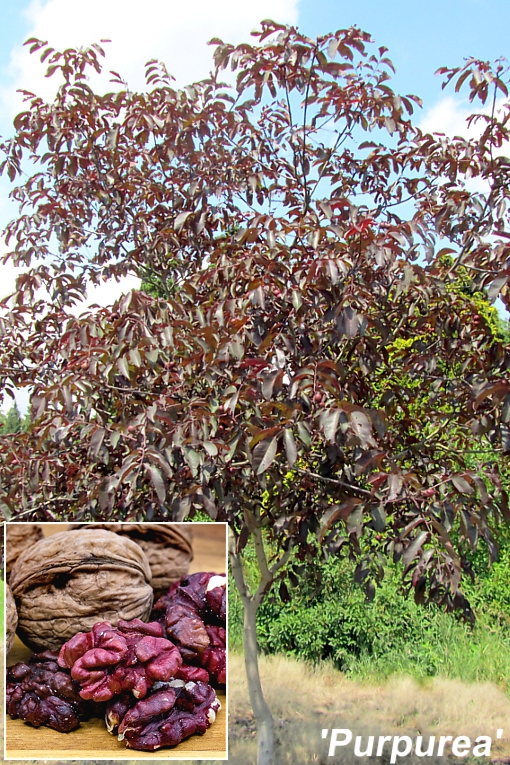Juglans regia +odrùdy common walnut
Common walnut is a native tree of the Old World. Its natural habitat lies between South-eastern Europe and Himalayas. Irrespective of its large size it is still one of the most sought-after fruit trees of our country.
Walnut has attractive, pinnate foliage that have a unique scent. Flowers are catkins. Both the leaves and flowers emerge late but yet may be damaged by late frost should it come in May when the leaves and flowers have come out. Fruit is a well-know walnut in a hard shell. This species ripens in October and sets fruit when 8-10 years old. Self-fertile.
Walnut is a large tree that needs space. It can grow 20m tall and wide and offers medium-deep shade. Its leaves cannot be composted. Pruning, if needed, can be done at the end of winter. Remove dead or damaged branches in late summer to prevent bleeding. It will grow in almost any well-drained soil but will thrive in deep and fertile soil, in full sun. Fully hardy to about -30°C (USDA zone 5).
Last update 18-01-2009

3 765,5 Kè

3 765,5 Kè

4 445,5 Kè

4 445,5 Kè

6 885 Kè
Goods are shipped all over Europe. For Russia and U.K. and for further details please read about SHIPPING OPTIONS HERE.
Are you interested in a serious discount for orders NOV-FEB? Check your options here.
THE PRICES INCLUDE VAT of 15%. For quick conversion you can use 1 CZK = approx. 0.04 EUR
- STANDARD QUALITY - Plants of this group are 1st class quality with number of branches and overall density adequate to their size and age, considering they were container grown.
- DE LUXE QUALITY - This label guarantees a luxurious quality of manually selected plants that, compared to their height and age, are exceptionally dense and beautiful.
- EXTRA - These plants are usually mature and bigger specimens with exceptional overall appearance.
- STANDARD (as described in the plant form) means a tree with a trunk of 190-210 cm and a crown at the top, unless specified differently. The commercial size for trees is their girth measured in the height of 1m from ground.
- HOBBY - These plants are of the same quality as our standard-quality plants but younger and therefore cheaper.
- SHRUB - a woody plant with branches growing bushy from the ground level.
- HALF-STANDARD or MINI-STANDARD - a small tree with shorter trunk, its size is usually specified.
- FEATHERED - These are trees with branches growing already from the base of the trunk and up along the stem.
- GRASSES and PERENNIALS - Sizes given usually read the diameter of the pot or the clump, as specified.






































